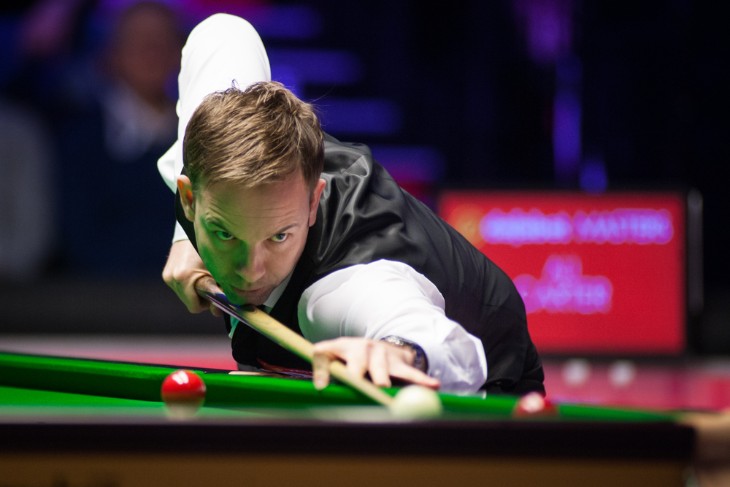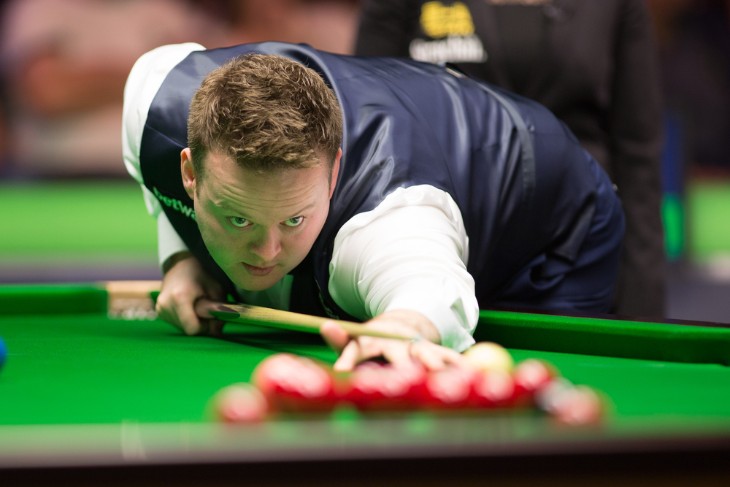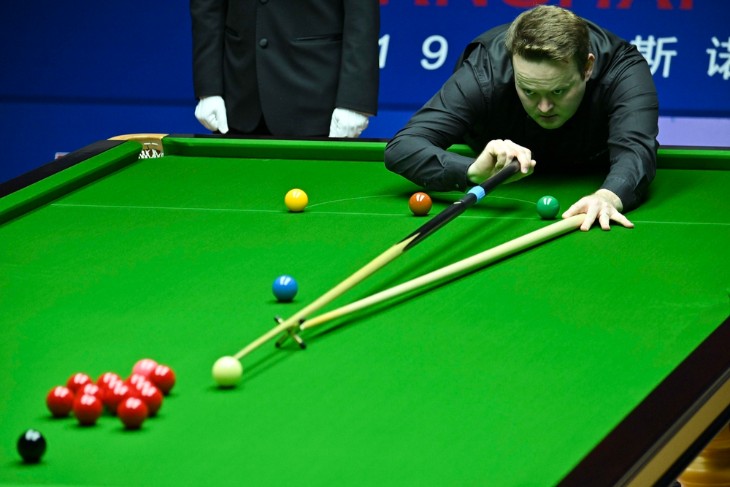- Understanding the Basics of Snooker for Accurate Predictions
- The Role of Player Technique and Style in Predicting the Next Ball Potted
- Analyzing Game Situations to Foresee the Next Pot
- The Impact of Psychological Factors on Predicting the Next Ball-Potted
- The Influence of External Factors on Snooker Predictions
- Leveraging Technology and Data Analysis in Snooker Predictions
- Developing Intuition and Experience for Enhanced Snooker Ball Prediction
- Final Takeaway
Predicting the next ball potted in snooker is an art that combines skill, strategy, and a deep understanding of the game. Whether you're a player, a fan, or a betting enthusiast, mastering this skill can transform your experience of the game. This guide dives into the techniques and insights essential for accurately predicting the next ball potted, a key aspect of strategy in snooker.
Understanding the Basics of Snooker for Accurate Predictions
To predict the next ball potted in snooker, a clear understanding of the game's basics is essential. Snooker, a cue sport, involves potting balls in a specific order on a rectangular table. The table has six pockets, one at each corner and two in the middle of the long sides. The game requires strategic thinking, precise cueing, and an ability to foresee the play's progression.
Snooker is played with 15 red balls, worth one point each, and six coloured balls with different point values. The coloured balls include yellow (worth two points), green (three points), brown (four points), blue (five points), pink (six points), and black (seven points). Players take turns, and in each turn, they must first pot a red ball, followed by a coloured ball. The coloured ball is then returned to its original spot until all the reds are potted. After this, the colours must be potted in their ascending point value.
Predicting the next ball potted involves understanding how players strategize. They aim to pot a red ball and position the cue ball to pot a high-value coloured ball next. Good players plan several shots ahead, considering how the balls are spread on the table and which shots will offer the best scoring opportunities while minimising the risk of giving their opponent an easy chance.
Positional play is also crucial. This means positioning the cue ball after each shot to make the next shot easier. Players with strong positional play can string together multiple pots in a single turn, known as a break. Predicting the next ball thus requires a grasp of how a player might navigate the table, considering both the current shot and subsequent opportunities.
Understanding snooker's rules, the scoring system, and the importance of strategic planning and positional play are key to accurately predicting the next ball potted. This knowledge forms the foundation upon which more advanced prediction strategies are built.
The Role of Player Technique and Style in Predicting the Next Ball Potted
Foreseeing the next pot in snooker involves a keen analysis of various game situations. By examining key elements of the game, you can gain insights into the player's next move.
- Position of the Balls: The layout of the balls on the table is a critical factor. If the balls are spread out, the player has a better chance of potting and might aim for higher-value balls. However, if the balls are close together or near cushions, the player may opt for a safety shot instead. Observing the ball placement can give you a good idea of what the player's options are.
- Player's Current Score: The player's score in the match can greatly influence their next shot. If they are trailing, they might take riskier shots to catch up. Conversely, if they are leading, they may play more conservatively. Understanding the context of the game's score helps in predicting whether a player will choose an aggressive or cautious strategy.
- Player's Past Behaviour: How a player has acted in previous frames can be a good indicator of their next move. A player who consistently takes bold shots is likely to continue doing so, while a more cautious player will likely aim for safe, strategic play. Recognising patterns in a player's behaviour can provide clues about their upcoming shot choices.
- Match Pressure and Stage: The stage of the match can also affect a player's decision. In high-pressure situations, like the closing frames of a match, players might behave differently than they would at the start. Some may feel the pressure and opt for safer shots, while others might become more aggressive, trying to clinch the game quickly.

Analyzing Game Situations to Foresee the Next Pot
To foresee the next pot in snooker, it’s crucial to analyze the game's current situation. This involves looking at the position of the balls, the score, and the player's style. Each of these elements can give clues about what might happen next.
The position of the balls on the table is a key factor. If the balls are spread out, the player has more options for potting. In this case, they might go for a higher scoring ball, like the black or pink. However, if the balls are clustered together, the player might focus on breaking them up or choosing a safer shot. It's important to look at the layout and think about what the player can realistically achieve from it.
The score in the game is another critical factor. If a player is behind, they might take riskier shots to catch up. On the other hand, if they're leading, they might play more defensively. Knowing the score helps in predicting whether a player will go for an aggressive or a cautious approach.
A player's individual style also influences their decisions. Some players are naturally aggressive and always look for opportunities to score big. Others might be more defensive, focusing on safety play and waiting for their opponent to make a mistake. Watching how a player has approached their shots in the game so far can give you a good idea of what they might do next.
Lastly, it’s important to consider any external factors. For instance, if a player has just made a great shot, their confidence will be high, and they might be more likely to take on a challenging pot. In contrast, a player who’s just made a mistake might play more cautiously.
Analyzing the game situation in snooker is about looking at the position of the balls, the score, the player's style, and external factors. By considering these aspects, you can get a better idea of what the player is likely to do next, making it easier to foresee the next pot.
The Impact of Psychological Factors on Predicting the Next Ball-Potted
Psychological factors significantly impact a player's decision-making in snooker, influencing the likelihood of the next ball being potted. These mental aspects can often be as crucial as technical skills in determining a player's next move.
- Confidence Levels: A player's confidence can greatly affect their shot selection. When a player is feeling confident, they are more likely to take on challenging pots and execute them successfully. This confidence often comes from previous successful shots or wins in the game. On the other hand, a lack of confidence might lead a player to opt for simpler, more conservative shots, reducing the chance of making errors.
- Pressure Handling: How a player handles pressure is another key psychological factor. In high-pressure situations, such as a close scoreline or an important frame, some players may become more cautious, focusing on safety rather than potting. Others might respond to pressure by taking more risks, aiming for difficult pots to gain a quick advantage. Observing how players have reacted to pressure in past games can give insights into their potential actions.
- Focus and Concentration: The level of a player’s focus and concentration can also predict their next shot. A player who is fully focused is likely to assess the table more accurately and choose the best potting options. Distractions or a lapse in concentration, however, can lead to poor shot choices or mistakes. The player’s body language and behaviour at the table can often indicate their level of focus.
- Recent Performance: A player's recent performance in the game or tournament can influence their mental state. For instance, a player on a winning streak may feel more positive and take more ambitious shots. Conversely, a player who has been struggling might play more defensively, focusing on avoiding mistakes rather than potting.
The Influence of External Factors on Snooker Predictions
External factors play a significant role in influencing snooker predictions, often impacting players' performance and, consequently, the course of the game. These factors, while outside the control of players, can alter the dynamics of a match and affect the predictability of the next ball potted.
One major external factor is the condition of the table. Factors like the cloth's smoothness, the level of the table, and even the room's temperature can affect how the balls move. For example, a new cloth can make the table faster, influencing the player's choice of shots and power. Predicting the next pot in such conditions requires an understanding of how these elements interact with the player's technique.
The atmosphere of the venue also plays a crucial role. A large, energetic crowd can either boost a player's confidence or add pressure, affecting their decision-making process. Some players thrive with the support of the crowd, taking on more ambitious shots. Others might become more cautious, impacting the predictability of their play. Observing how a player has reacted to the audience in the past can give insights into their likely approach in the current game.
Another external influence is the stage of the tournament. High-stakes matches, such as finals or matches against crucial opponents, can significantly pressure players. This pressure can lead to unexpected decisions, making predictions more challenging. Players with experience in high-pressure situations might be more composed, while less experienced ones might be prone to errors or unexpected shots.
External factors like the condition of the table, the atmosphere of the venue, and the match's importance significantly influence snooker predictions. These elements can affect players' performance, impacting the predictability of the next ball potted. Understanding and considering these factors can enhance the accuracy of predictions in snooker.
Leveraging Technology and Data Analysis in Snooker Predictions
The use of technology and data analysis is increasingly becoming a game-changer in making snooker predictions, particularly in forecasting the next ball potted. These modern tools offer detailed insights that were previously unattainable, enhancing the accuracy of predictions.
- Statistical Analysis Software: Advanced statistical analysis software is now used to analyze players' past performances in detail. These programs can track a player's potting percentage, break-building patterns, and success rate under pressure. By examining these statistics, predictions about a player's likelihood of potting the next ball in specific situations become more accurate. This data-driven approach adds a layer of precision to the predictions.
- Machine Learning Algorithms: Machine learning algorithms are starting to be employed in snooker predictions. These algorithms analyze vast amounts of data, including players' historical performances and current game conditions, to predict outcomes. They learn from past games and continuously refine their predictions, offering insights that might be missed by the human eye.
- Real-Time Performance Tracking: Real-time performance tracking technology, such as sensors and wearables, provides instant data on players' physical and mental states. This information can be crucial in predicting a player's next move. For instance, a change in heart rate or body language detected by these devices can indicate stress, which might affect a player's decision-making process.
- Video Analysis Tools: Video analysis tools offer a visual breakdown of players' techniques and strategies. By examining footage of previous matches, analysts can identify patterns in a player's shot selection and positioning. This information is invaluable for predicting the types of shots a player is likely to take in various game situations.

Developing Intuition and Experience for Enhanced Snooker Ball Prediction
Building intuition and gaining experience are key elements in enhancing the ability to predict the next ball potted in snooker. These skills come from continuous observation and involvement in the game.
- Observation of Matches: Regularly watching snooker matches is a great way to develop intuition. Pay attention to how different players approach their shots in various situations. Notice patterns in their play, like how they react under pressure or when they are ahead in the game. Over time, this observation helps build a sense of what might happen next based on similar past situations.
- Playing Experience: Playing snooker yourself is invaluable for understanding the game's nuances. First-hand experience of different shot options and table layouts provides insight into what a professional player might do in a given situation. The more you play, the better you get at anticipating the challenges players face on the table and how they might resolve them.
- Learning from Experts: Listening to commentary from snooker experts and analysts can also enhance prediction skills. These professionals often have years of experience and can offer insights into the game that you might not have considered. They can point out subtle aspects of play that influence a player's decision-making process.
- Analyzing Player Styles and Tactics: Each player has their own style and tactics. Some are aggressive, going for pots whenever possible, while others are more defensive, focusing on positioning. Understanding these styles helps in predicting what a player is likely to do next. It’s about recognizing their patterns and preferences in different game scenarios.
Final Takeaway
Predicting the next ball potted in snooker is a multifaceted skill that enhances the understanding and enjoyment of the game. By combining knowledge of the basics, player styles, game situations, psychological factors, external influences, and technological advancements, anyone can develop a keen eye for accurate predictions. Whether for personal enjoyment, strategic gameplay, or betting purposes, mastering this skill adds an exciting layer to the experience of snooker.




.webp)


 (1).webp)




















